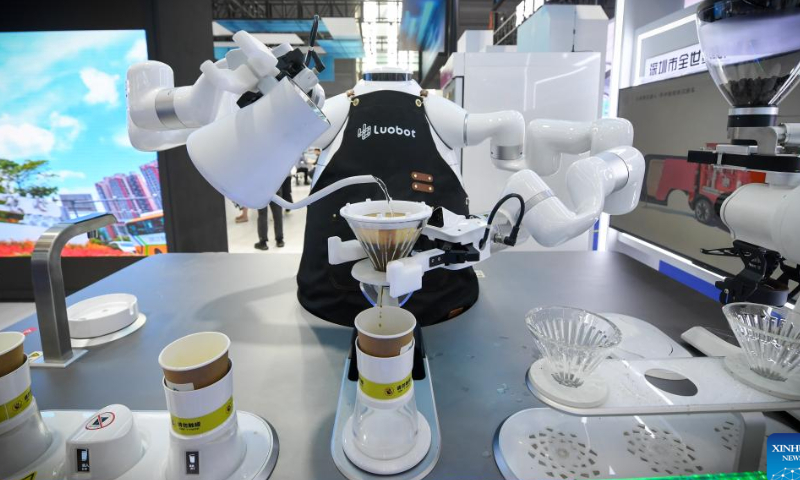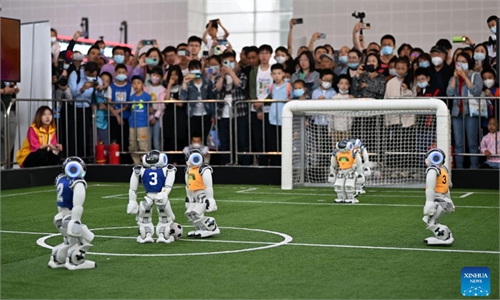Beijing reveals plan to boost local robot industry

A robot makes coffee at the 24th China Hi-Tech Fair (CHTF) in Shenzhen, south China's Guangdong Province, Nov. 15, 2022. The 24th China Hi-Tech Fair (CHTF) kicked off on Tuesday in Shenzhen, south China's Guangdong Province, attracting over 5,600 exhibitors from 41 countries and regions. Photo: Xinhua
Beijing's local government unveiled a new action plan on Wednesday for industrial innovation and development in the robot industry from 2023-2025, aiming to boost self-development across the supply chain in key technology areas.
The plan comes as a follow-up to government efforts to take an active approach in the preparation for future industry development in areas like robots and artificial intelligence (AI), experts said.
The plan aims to ramp up the industry layout of humanoid robots and support enterprises and universities in developing key robot components. The capital also aims to support the establishment of an innovation center for humanoid robots.
Specific goals are included in the plan. By 2025, Beijing's innovation capability in the robot industry will be greatly improved and 100 types of high-tech and high value-added robot products will be cultivated, along with 100 application scenarios.
The city's robot industry is expected to generate revenue of more than 30 billion yuan by 2025.
The application scenarios for humanoid robots are wide-ranging, with potential demand in industries ranging from the services sector to municipal firefighting, Xiang Ligang, a veteran technology analyst, told the Global Times on Wednesday. "We need to proactively plan and prepare for the future in order to be in the front league of the world," Xiang noted.
Talking about the importance of developing humanoid robots and AI, Xiang said that it requires high levels of technological integration and represents the core of technological development.
For example, the robots need to be able to move and maintain balance, and they should be able to sense and react to the surrounding environment, while demonstrating certain levels of artificial intelligence and understanding.
China has been an active player in technology development in this area, which gives the country an advantage for reaching its ambitious goals.
In January 2022, fifteen government departments including the Ministry of Industry and Information Technology and the National Development and Reform Commission rolled out a plan for China to become a global leader in robot technology innovation by 2025.
China's development in the related industries has been conspicuous in terms of expansion and technology advancement. For example, from 2016 to 2020, the scale of the country's robot industry grew at an average annual compound rate of about 15 percent.
Breakthroughs in key technologies and components such as precision reducers and intelligent controllers have also accelerated, and innovations and application scenarios are constantly emerging.
"We have already made significant progress domestically in terms of technological foundations. As the government takes the lead, providing funding and policy support, we can see that opportunities in the new industries - robots and AI - are about to emerge," Xiang said.
"Surely, this will require long-term investment, and it may take years to see significant results, but in order to take the lead, we must start preparing now," the expert said.

